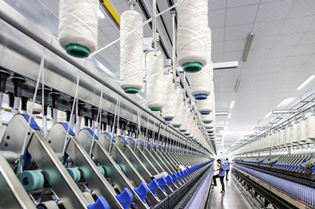Inner Mongolia leverages vegetable development
According to the Inner Mongolia autonomous region’s “8337” development strategy, the region will develop itself into a green agricultural and animal products processing output base that offers a new opportunity for the local vegetable industry.
Greenhouses produce wealth
Vegetable greenhouses were built on top of each other in Shebiya village, Saihan district, Hohhot city, an area where villagers had relied on cattle breeding before 2007.
Tomatoes, cucumbers, lettuce and kidney beans fill up the three greenhouses owned by Gao Xiuling, a local villager.
She goes to the greenhouses first thing in the morning every day, controlling fresh air input based on weather conditions, greenhouse humidity and vegetable growth period. Good weather calls for more fresh air, while cloudy days call for less. In this way the temperature, humidity and carbon dioxide concentration can reach an optimum level to reduce disease and increase output, according to Gao.
“It’s hard to keep a greenhouse, but the income is good,” said Gao. “I can rake in 20,000 yuan ($3,202) from each greenhouse every year.”
The village is now home to 1,000 vegetable greenhouses, nearly one for every villager. The vegetables are mainly supplied to Hohhot and have enjoyed brisk sales. Some local farmers also found business opportunities at the fruit-picking market. Zhao Zhongtang, a local villager, has four greenhouses, where he has started planting various vegetables since 2007. Last year, he began planting strawberries, nectarines, honey peaches and grapes, all for visitors to pick.
The price of 120 yuan per kilogram can’t stop his strawberries from being snapped up by eager visitors, according to Zhao. “My fruits are grown without fertilizer or pesticides, and are pollution-free. That’s why they’re popular,” said Zhao.
Wuchuan’s potatoes target foreign market
Wuchuan county in Hohhot has launched large-scale potato plantations in recent years, trying to find a larger market for its potatoes.
Last year, a specialized cooperative led by Zhang Chengzhong, a local villager, reaped a harvest of 4,000 tons of potatoes. Zhang himself planted a 300 mu (20 hectare) area of potatoes and raked in 400,000 yuan. He expanded the plantation area to 800 mu this year.
“Potatoes received a good harvest and price last year, and most of them were sold at my doorstep. Some went to supermarkets or starch processing companies. We never worried about the sales,” said Zhang.
When Inner Mongolia proposed to develop itself into a pollution-free agricultural and animal products processing base, Zhang began considering how to export those green products.
Zhang began to talk with supermarkets in Beijing and Shanghai five years ago to supply Wuchuan’s potatoes to these supermarkets. He made plans to sell them to the Middle East three years ago. However, agricultural products export requires many procedures, such as soil and irrigation water tests. Despite this, Zhang, a junior high school dropout, prepared 80 percent of the required materials on his own. At the moment, he is on the home stretch of sending his potatoes abroad. Zhang said that all the efforts were based on Inner Mongolia’s development strategy.
Zhang has achieved what past generations have failed to accomplish in only a few years, but he still aims for greater development. “We don’t have professional technicians, hardware and funds, and I hope I can find professionals to help me with export procedures. If not, we still have a very long way to go before we can get our potatoes abroad,” said Zhang.



 Print
Print Mail
Mail





